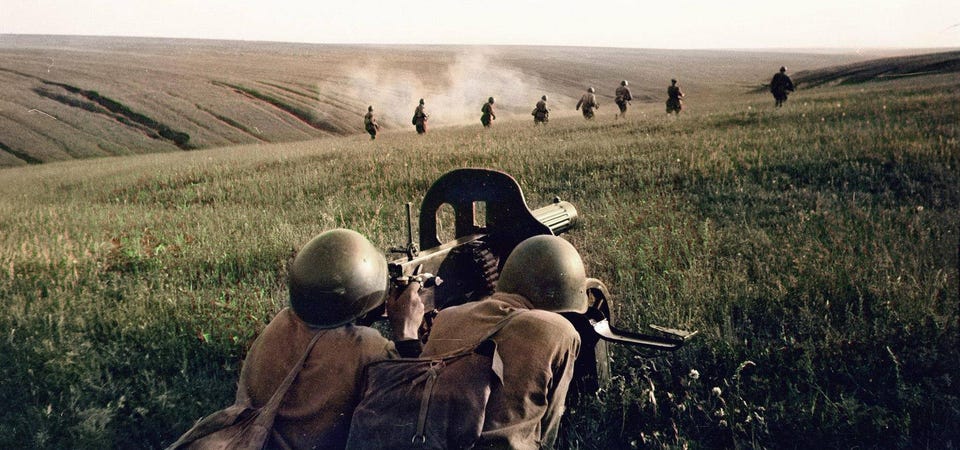After losing as many as 100,000 troops killed and wounded in Ukraine and forcibly drafting 300,000 unwilling men to replace these losses, the Russian army reportedly is deploying “barrier troops” to prevent the draftees from deserting or retreating without orders, the U. K. Defense Ministry reported on Friday .
Barrier troops punish fleeing soldiers by arresting them. Or even shooting them, as Soviet barrier forces sometimes did during World War II. Such harsh measures probably didn’t make much difference 80 years ago.
And they probably won’t help today. Barrier troops might deter a few frightened front-line troops from abandoning their positions. But they do it badly and at a high cost.
There’s no reason to believe the Ukraine war will be the exception. In 1942, the German army was marching toward Moscow and the Soviet army was falling back. In July that year, Soviet premier Josef Stalin issued a decree essentially outlawing retreat—a decree barrier troops would have to enforce.
“The conclusion is that it is time to stop the retreat,” Stalin wrote. “Not a single step back! This should be our slogan from now. ” Soon every army corps of 10,000 or so soldiers had as many as five 200-man barrier units.
Between August and October 1942, 193 of these units—together overseeing 38,600 men—detained an estimated 140,755 fleeing soldiers across the Soviet war effort, Dartmouth political scientist Jason Lyall concluded . How many retreating soldiers the barrier detachments shot is unclear. Perhaps very few.
The barrier troops’ work usually involved “catch and-release,” according to Lyall. Most detainees were eventually “steered” back to their units. Soviet fortunes turned around soon after Stalin’s order, but it’s probably inaccurate to attribute the reversal to the harsh new policy of punishing withdrawing troops.
Rather, the German army failed to sustain its supply lines, stretched out across 800 miles, while Russian logistics improved. The onset of winter certainly didn’t boost the undersupplied Germans’ dire disposition. Still, 80 years later this fall, as the war in Ukraine turned against Russia, Russian media began echoing Stalin’s words from 1942.
One propagandist on Russian state television proposed authorizing a “prosecutor” with five military policemen to arrest and interrogate “milky,” “childish” soldiers who retreat from enemy attacks. If the U. K.
Defense Ministry is correct and the Kremlin is deploying barrier troops, then the propagandists’ rhetoric has become policy. But don’t expect them to shoot many, or any, deserters. And don’t expect them to turn around Russia’s faltering war effort.
Barrier troops might prevent a retreat here or there by punishing a few frightened soldiers and creating a deterrent effect. But there are downsides. For starters, barrier units “represent a sizable diversion of resources” from front-line units, Lyall wrote.
That diversion paradoxically could make front-line units more fragile—and more likely to break. Consider that, in 1942, it took nearly 39,000 blocking troops to detain some 140,000 retreating front-line troops. Now imagine the blocking units had fought the Germans , instead.
Could 40,000 fresh reinforcements have prevented the 140,000 tired troops from fleeing? And even with the threat of arrest—or worse—from a barrier or “blocking” unit, demoralized and defeated front-line troops usually find a way to escape the front. Self-wounding is a big one. “Anecdotally, we often observe the rise of self-inflicted mutilation and maiming by soldiers desperate to escape both the battlefield and the wrath of blocking units,” Lyall wrote.
Barrier forces are an inefficient use of manpower and supplies. And the Russian army can’t spare either right now. Besides, a beaten Russian battalion full of unhappy, starving draftees facing a better-trained, better-supplied Ukrainian force probably is going to find a way to quit fighting.
One way or another. .
From: forbes
URL: https://www.forbes.com/sites/davidaxe/2022/11/05/the-soviet-army-once-shot-its-own-troops-for-retreating–the-russian-army-could-do-the-same/



